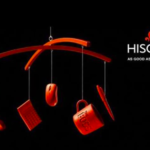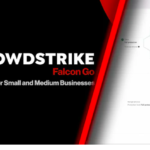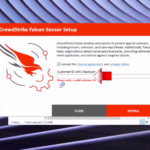Finding affordable high risk insurance can be challenging, but with some research and comparison shopping, it is possible to get the coverage you need at a price you can afford. This guide provides tips and strategies for finding low cost high risk insurance providers.
What Is High Risk Insurance?
High risk insurance refers to coverage for individuals or businesses deemed to be a higher insurance risk. This includes drivers with DUI convictions, people with poor credit, businesses with hazardous operations, and more. High risk insureds often have difficulty finding affordable coverage from standard insurance companies.
Why Is High Risk Insurance More Expensive?
Insurers assign higher premiums to high risk policyholders because they are statistically more likely to file claims. Common factors that may designate someone as high risk include:
- Poor driving record or DUI/DWI conviction
- Poor credit score
- Lapses in insurance coverage
- Risky hobbies or occupations
- Claims history
- Young drivers
Since high risk individuals represent an increased potential for loss, insurers charge more for coverage in order to mitigate that risk.
Tips for Finding Low Cost High Risk Auto Insurance
Auto insurance is required in most states and pricing is primarily based on risk factors like driving history and location. Here are some tips for finding cheaper high risk car insurance:
Shop Around and Compare Quotes
- Get quotes from as many providers as possible. Rates can vary significantly between insurers.
Choose State Minimum Coverage
- Opting for the minimum liability limits required in your state can lower premium costs.
Ask About Discounts
- Many insurers offer discounts for things like: defensive driving courses, low mileage, good student status, etc.
Look for Second Chance Insurers
- Specialty insurers like The General cater to higher risk drivers and may offer affordable rates.
Consider Usage-Based Insurance
- Programs that base rates on actual driving behaviors can help lower costs for safe driving habits.
Raise Your Deductible
- Choosing a higher deductible means you pay more out-of-pocket per claim, but it lowers the premium.
Improve Your Credit
- Insurance scores derived from credit reports are often used to set rates. Improving credit can result in discounts.
Finding Affordable High Risk Home Insurance
Home insurance rates for high risk home owners are impacted by factors like claims history, age of home, protective devices installed, and location/fire risk. Here are some ways to save:
Bundle with Auto Insurance
- Bundling home and auto policies with the same provider can qualify you for multi-policy discounts.
Comparison Shop
- Get quotes from standard and non-standard home insurers to find the lowest rate.
Choose Higher Deductibles
- As with auto insurance, a higher deductible means lower premiums.
Install Protective Devices
- Things like smoke alarms, security systems, and fire-resistant construction can lower rates.
Seek Discounts
- Look for discounts like multi-policy, new home, and claims-free discounts.
Improve Credit Score
- Maintaining good credit saves money on insurance for both home and auto.
Finding Affordable High Risk Business Insurance
Many small businesses face high risk designation due to factors like industry type, claims history, lack of risk management, etc. Here are some tips for lowering rates:
Proper Classification
- Ensure your business is properly classified. Lower risk classes mean lower base rates.
Manage Risks
- Implement safety protocols, employee screening, theft deterrents, and other risk management steps.
Compare Specialized Providers
- Shop quotes from providers focusing on your industry or high risk businesses.
Choose Higher Deductibles
- As with other policies, higher deductibles bring lower premium costs.
Seek Discounts
- Look for things like multi-policy, safety equipment, and alarm system discounts.
Avoid Claims
- Maintaining a claims-free history keeps rates low. Report/address risks before they become claims.
Other Ways to Reduce High Risk Insurance Costs
Beyond shopping around and minimizing risks, there are a few other strategies that can help lower insurance premiums:
- Raise liability limits – Lower liability limits mean larger potential out-of-pocket costs. Raising limits minimally impacts monthly premiums while significantly improving coverage.
- Pay annually – Paying premiums annually rather than monthly can reduce costs. There are fewer processing fees for insurers.
- Maintain continuous coverage – Lapses in insurance can negatively impact your rates for years. Maintain continuous coverage, even if minimum limits.
- Check for policy discounts – Things like safe driver, safe property, claim-free, and multi-policy discounts can help lower rates.
- Improve driving habits – Reducing mileage, avoiding tickets/accidents, and taking defensive driver courses over time improves driving scores used to set premium costs.
5 FAQs About High Risk Insurance Coverage
What is the highest risk classification for auto insurance?
Referred to as “standard” or “non-standard” auto insurance, the highest risk tier is for drivers with multiple at-fault accidents, DUI convictions, major violations, no prior insurance, and/or very poor credit/insurance scores.
How long will insurance rates be high risk?
Most negative marks on your record impact rates for about 3 years. However, major incidents like DUIs and at-fault accidents can affect premiums for 5 years or longer. Maintaining a clean record helps premiums gradually improve.
What credit score do you need for lower insurance rates?
While specific requirements vary by state and insurer, most consider credit scores above 660 good and below 600 high risk. Improving credit from poor to fair/good can potentially save hundreds per year.
Can I get affordable high risk home insurance?
Yes, there are specialty insurers that offer affordable higher risk home insurance. Shop around, maintain good credit, minimize risks/claims, and compare quotes from standard and non-standard home insurers.
How much does high risk business insurance cost?
Costs vary significantly based on industry type, risk factors, chosen coverage, and insurer. Expect to pay 5-25%+ more compared to lower risk businesses. Implementing protections like alarms, safety plans, and employee screening can help control costs.
Final Thoughts
Finding affordable high risk insurance requires diligent comparison shopping between standard and non-standard insurers. Controlling the risk factors within your power, maintaining continuous coverage, improving financial responsibility, bundling policies, choosing higher deductibles, and seeking available discounts can help lower premium costs. With persistence, it is possible to obtain the essential insurance coverage you need at a rate that fits within your budget.










